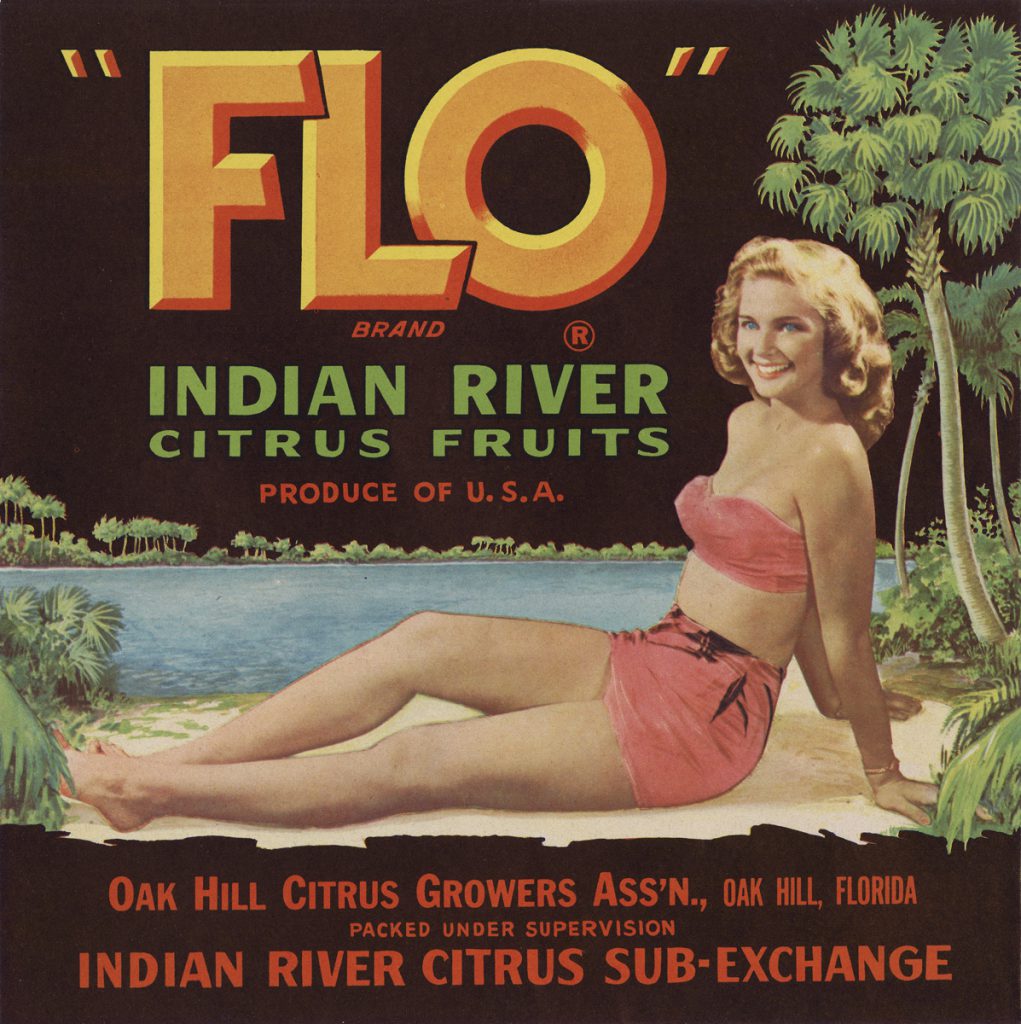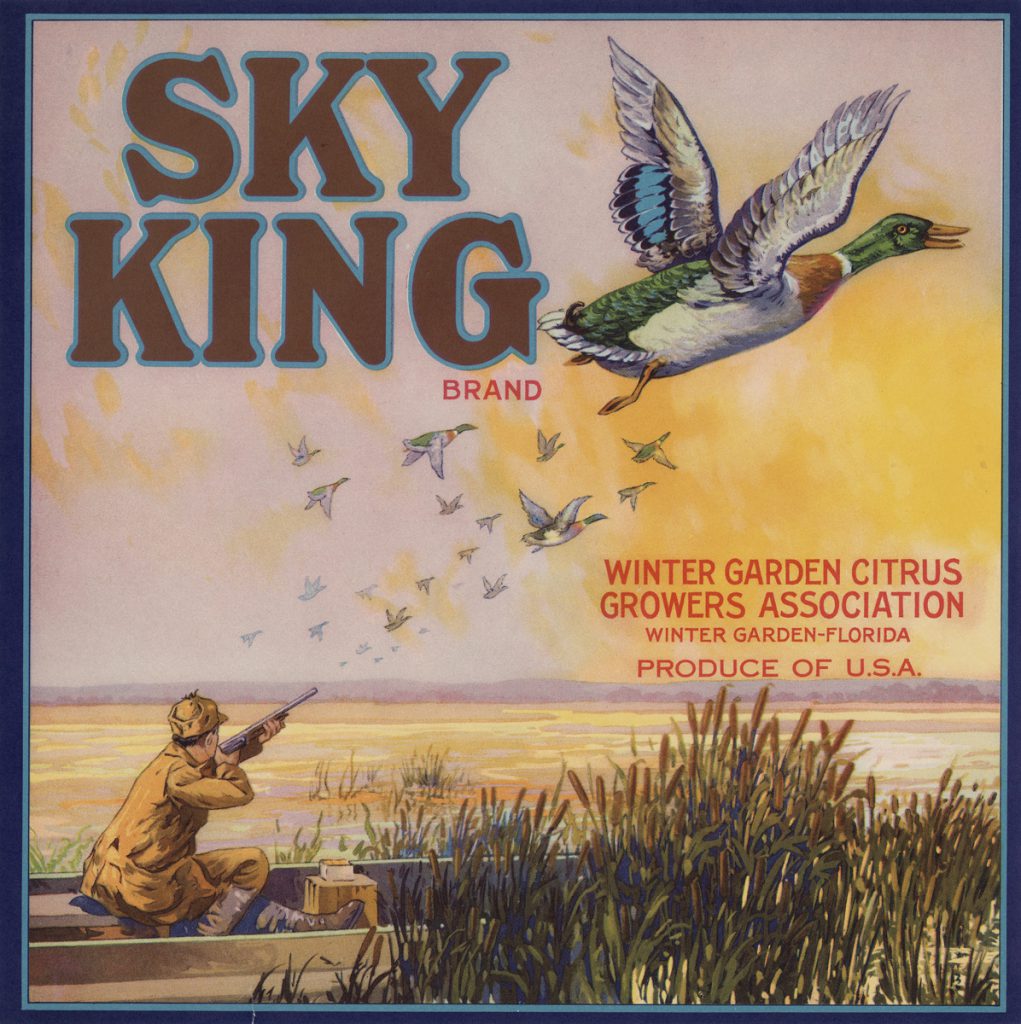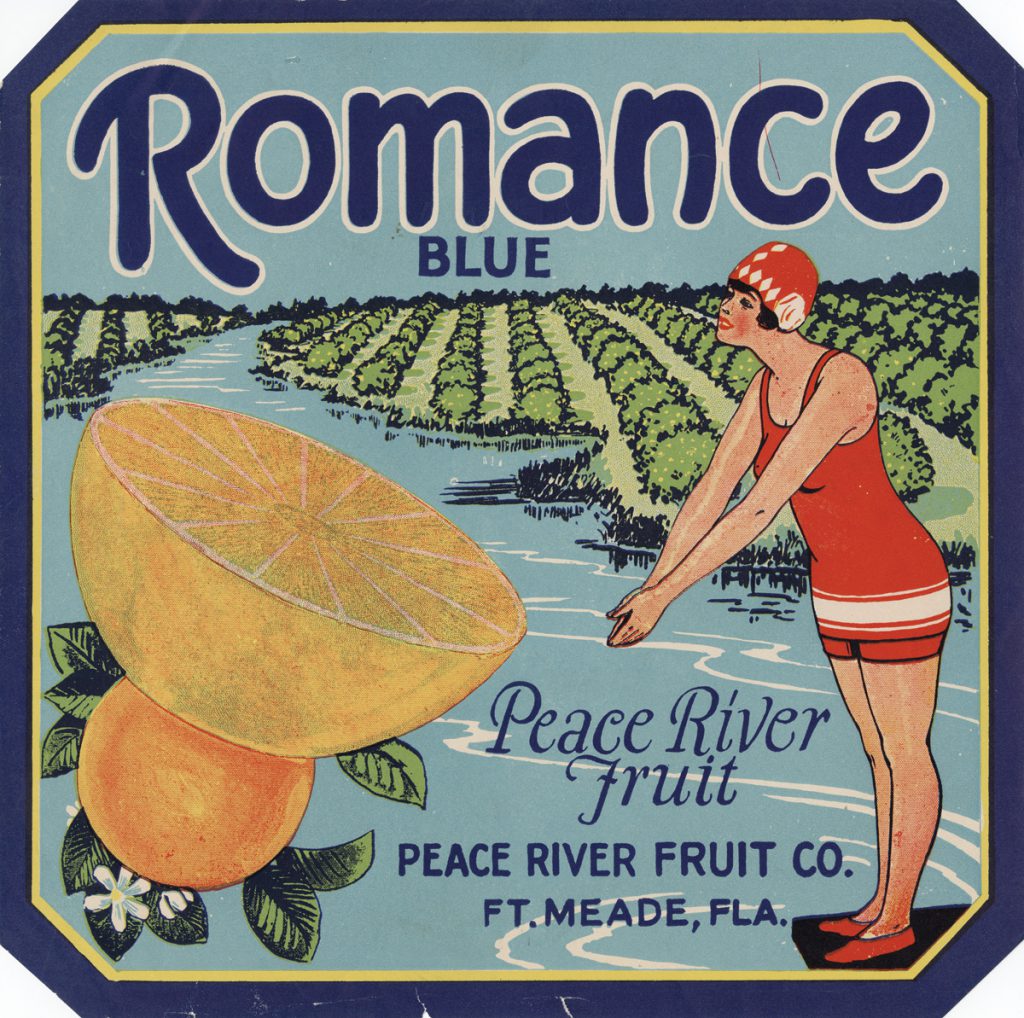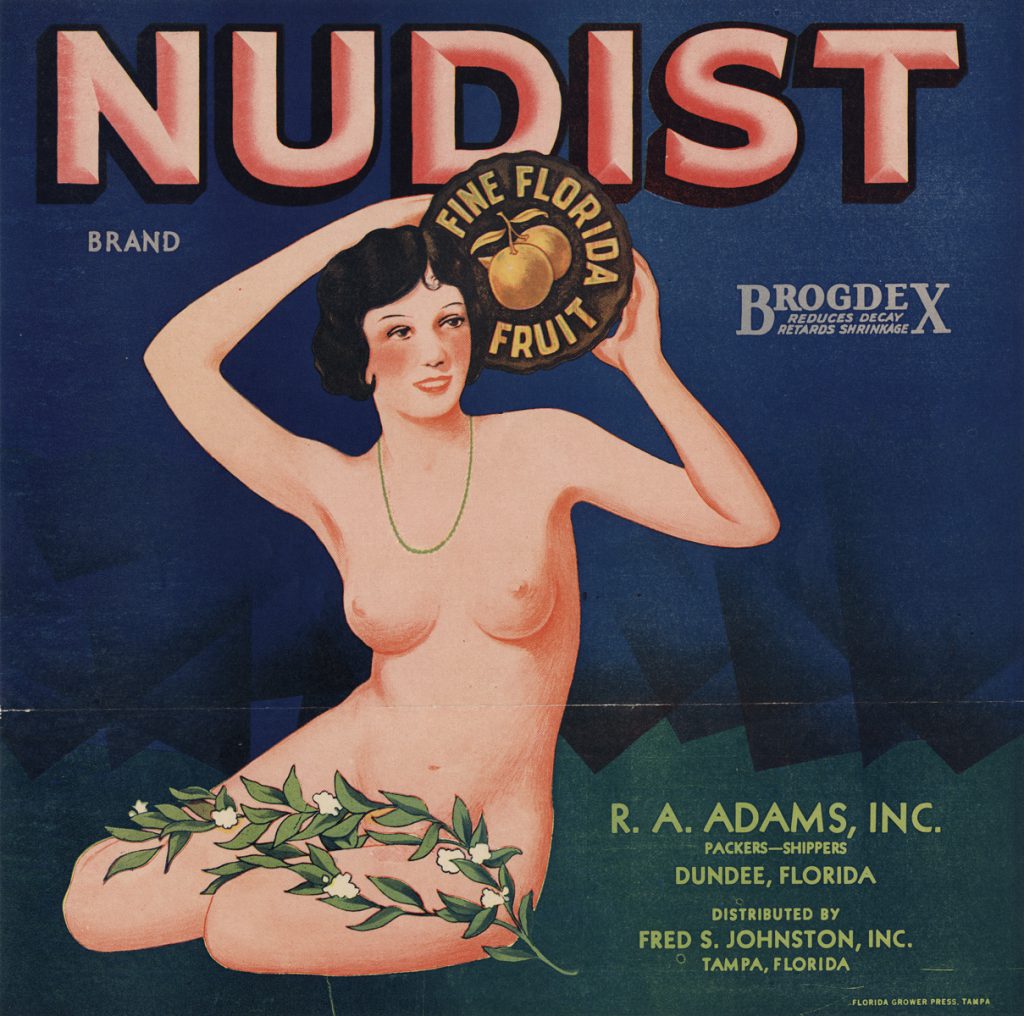Florida’s history is colorful, but perhaps no piece of its past is as colorful as its citrus crate labels.
The nostalgic images are an invitation to stroll down memory lane, one lined with orderly rows of citrus trees. The labels began as a simple marketing tool pasted onto wooden crates to identify the harvest of one grove from another. As rail travel opened national commerce after the Civil War, more and more Florida citrus was shipped to northern auction houses.
The images grew in whimsy and artistry as groves and packing houses competed for a share of the northern market. Color was code for fruit quality, with a blue background and names like Blue Heron signaling grade A fruit, red for grade B, and yellow or green for boxes of mixed grades.

Today, the labels are a beloved historical art form, as well as an obsession for many collectors, like citrus baron Jerry Chicone Jr., who donated almost 4,000 labels to the University of Florida Libraries to create the Jerry Chicone Jr. Florida Citrus Label Collection.
The artists are mostly unknown, the lithographers who hired them now mostly out of business. In lithography, the image was first etched in stone or sometimes metal, which was then inked and used as a printing plate. James Cusick, curator of the P.K. Yonge Library of Florida History and caretaker of the collection, says the ink the lithographers used must have been good for the cheap paper labels to have stood the test of time, particularly in Florida’s heat and humidity.
The library has digitized all the labels and is now in the process of conserving them, carefully cleaning, repairing and then sealing them, so they can be viewed without being damaged.

Chicone grew up in Florida citrus and remembers hanging around packinghouses while he was in grammar school and watching workers glue labels onto crates of citrus grown in his family’s groves. Even as a child, the colorful images enchanted him.
Chicone says he started collecting the labels in 1976, when he heard a news report about the importance of collecting paper history because the paper past was disappearing. The heyday of the labels spanned the first half of the 20th century, and they began to disappear in the decades after World War II as cardboard boxes replaced the wooden crates. He estimates about 5,000 might have been in circulation, some simply lost to time.
Florida Grower Press in Tampa was one of the largest label printers, and Chicone discovered a vendor who sold the labels in the Ybor Square antiques mart. He and his wife, Sue, would travel to Tampa once a month on a Sunday to Ybor Square, with a budget of $50.

In 2014, the Florida citrus hall-of-famer drove from his Winter Garden home to Gainesville and wheeled his collection into UF’s Smathers Libraries, overnight creating one of the largest university-based citrus label collections.
“They took it all, and I’m happy they did,” says Chicone, a 1956 UF graduate, now 82 and still a force in Florida’s $9 billion a year citrus industry. “One of the best things I’ve ever done is donate that collection to the University of Florida.”
Scholars, historians and art students couldn’t agree more. A collection that had been stored in 21 archival scrapbooks in Chicone’s home is now open to physical inspection on campus and virtual inspection worldwide, via a website. Art students have studied it as commercial art and examples of lithography. Scholars and historians can use it to trace the geography of Florida’s citrus industry and track Americana with visual images.
The collection also provides a cornerstone for other citrus-related pieces in the Florida history collection, Cusick says.
“It’s one of the more fun elements in our collection,” Cusick says.
Chicone says he was not sorry to give up his collection because he knew the labels were going to a good home, where scholars and students can study them and people who share his appreciation of the nostalgic art and Florida’s past can enjoy them.
Besides, he says, “The great pleasure was in the hunt.”
A Collection of Photos from Citrus Crate Labels
Source:
- James Cusick, Curator of the P.K. Yonge Library of Florida History
Related Websites:
Related Video:
This article was originally featured in the Fall 2016 issue of Explore Magazine.






















